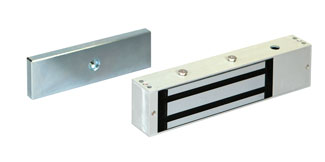When it comes to electrified locks and exit devices, power transfers play a crucial role in ensuring seamless operation while maintaining security and aesthetics. Whether you’re planning new construction or retrofitting existing doors, selecting the right power transfer solution can make all the difference.
What Are Power Transfers?
Power transfers provide a means of running wires from the door frame to electrified door hardware such as locks, strikes, or exit devices. They come in various forms, each suited to specific applications and installation requirements.
Types of Power Transfers
- Surface-Mounted Power Transfers
- Includes armored door cords or door loops.
- Economical and easy to install on existing openings.
- Ideal for field preparation in both retrofits and new construction.
- Highly visible but durable, making them a practical choice for many applications.
- Concealed Power Transfers
- Mortised into the door and frame for a clean, tamper-resistant installation.
- Factory-prepared and approved for fire-rated openings.
- Best for heavy-traffic environments or areas requiring higher security.
- Electric Hinges
- Provide a concealed and vandal-resistant method of running wires.
- Fit into standard 4-1/2″ or 5″ hinge preparations with minor modifications for wire clearance.
- Recommended for the center hinge position for optimal performance.
- Wireless Power Transfers
- Use radio frequency (RF) transmitters to wirelessly transfer energy across the door gap.
- Eliminate the need for drilling or conduit installation, making them ideal for retrofits, especially with wood doors.
- Capable of transferring power and signals, including latch bolt monitoring and request-to-exit (REX) signals.
When Are Conduits Needed?
- For electrical locks and strikes, a conduit or raceway is often recommended to run wires from the hinge-side preparation to the lock or strike preparation.
- With electrical panic devices, most connections are through the hinge-side mounting, and no conduit is typically required in the door.
Benefits of Power Transfers
- Aesthetic Appeal: Concealed power transfers maintain a clean look by hiding wires.
- Durability: Heavy-duty options are designed to withstand frequent use in high-traffic areas.
- Security: Concealed solutions reduce the risk of tampering or vandalism.
- Ease of Installation: Surface-mounted and wireless options simplify retrofitting and field preparation.
Key Considerations
- Always consult your Authority Having Jurisdiction (AHJ) to ensure compliance with fire-rated opening requirements.
- For high-security or heavy-traffic environments, prioritize concealed or heavy-duty power transfers to enhance durability and tamper resistance.
- For retrofits, consider wireless options to save time and avoid invasive installations.
Conclusion
Power transfers are the unsung heroes of electrified door systems, ensuring reliable power delivery while maintaining security and aesthetics. By understanding the types and applications of power transfers, you can choose the right solution for your project, whether it’s a high-security facility, a retrofit, or a new construction.
For more information or assistance with selecting the ideal power transfer for your needs, feel free to reach out to our team.









